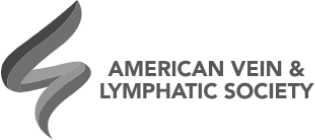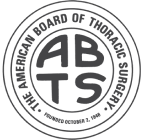















Chuback Vein Center - July 15, 2024
Imagine dealing with a painful, persistent wound that just won't heal. For many older adults, this is the reality of living with venous leg ulcers (VLUs). According to the American College of Phlebology, VLUs affect about 1% of the U.S. population, with higher prevalence among the elderly. These stubborn sores are not only painful but also notoriously difficult to manage, often recurring despite best efforts at our vein treatment center.
Effective management of these ulcers is crucial to not only promote healing but also to prevent their recurrence. In this blog post, our New Jersey vein treatment center dives into proven strategies for the long-term management of VLUs so patients, caregivers, and healthcare professionals can partner with our vein specialists to handle this challenging condition.
Venous leg ulcers (VLUs) stem from chronic venous insufficiency (CVI), where leg veins struggle to return blood to the heart, leading to increased pressure and skin breakdown. Typically found on the lower legs above the ankle, VLUs are painful open sores that heal slowly.
Compression therapy is key to managing venous leg ulcers (VLUs). By using compression stockings or bandages, we can boost blood flow, reduce swelling, and speed up healing. Research shows that this approach can significantly cut down healing time and help prevent ulcers from coming back. In fact, a review in the Journal of Vascular Surgery found that high-compression stockings work better than low-compression ones for keeping ulcers from recurring.
Regular check-ups with your vein doctor are essential for managing venous leg ulcers (VLUs). Routine monitoring helps catch signs of infection or complications early. Consistent follow-up appointments have been shown to improve healing outcomes and reduce the chances of recurrence.
Patients are encouraged to adopt lifestyle changes that can help improve venous circulation. This includes regular physical activity, weight management, and elevating the legs to reduce venous pressure. The American Journal of Clinical Dermatology reported that patients who maintained an active lifestyle had a lower risk of VLU recurrence.
Effective wound care is crucial for managing venous leg ulcers (VLUs). This involves regular cleaning, removing dead tissue, and using the right dressings to keep the wound moist. Dressings like hydrocolloids and foam dressings, which maintain a moist environment, have been shown to be more effective in promoting healing compared to dry dressings.
At Chuback Vein Center, we emphasize comprehensive wound care, including regular Unna Boot applications. The Unna Boot is a specialized dressing that provides compression and promotes healing by maintaining consistent pressure on the affected area. Our patients return weekly for Unna Boot care sessions, ensuring optimal wound management and accelerated healing of venous leg ulcers.
Treating the underlying venous insufficiency is crucial for preventing recurrence. Our vascular specialist may recommend procedures such as endovenous laser therapy (EVLT) or sclerotherapy to close off the affected veins.
At Chuback Vein Center, we offer top-of-the line, minimally invasive procedures to address varicose veins and spider veins. But it doesn’t stop there, our mission is to restore health and overall wellness, meaning that we will guide you at every step of your vascular health journey.
Patients who undergo vein treatment have shown to have significantly lower recurrence rates for venous leg ulcers (VLUs), according to the Journal of Vascular and Interventional Radiology.
Educating patients about VLU management and self-care techniques is essential. This includes teaching them how to properly apply compression stockings, recognize signs of infection, and the importance of adhering to follow-up appointments. If you are experiencing itching, dull ache, swelling, signs of pooling blood or changes in the skin, do not wait. Seek medical attention or contact our office to book a consultation.
We invite you to become a part of the Chuback Vein Center family. We are confident in our ability to restore your health and wellness.